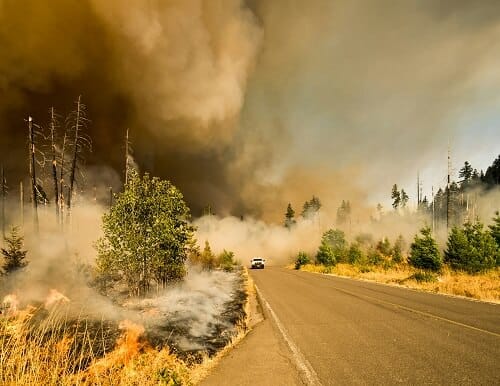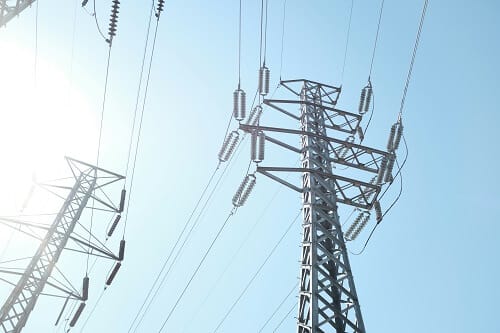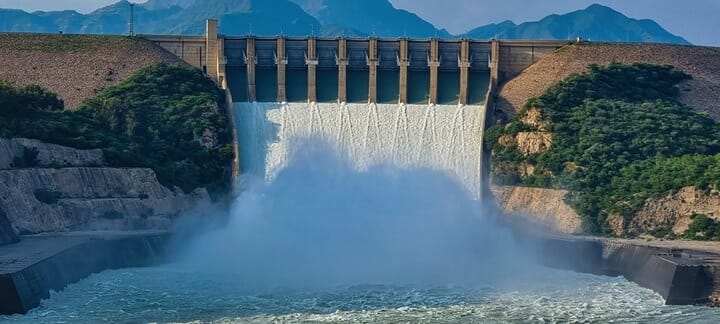
As the climate change impact becomes more evident, extreme weather events like hurricanes, wildfires, floods, and heatwaves are pushing local infrastructure to its limits. Bridges are collapsing, roads are washed away, and power grids are failing under the pressure of these increasingly intense events. Without preparing for extreme weather events, communities are left vulnerable, with vital services disrupted and millions of dollars lost in repair costs.
This article delves into how extreme weather events expose infrastructure weaknesses and what can be done to address this growing crisis. We’ll also explore disaster management practices and provide five key ideas for governments to help mitigate the impact of extreme weather on infrastructure:
- Invest in climate-resilient construction materials.
- Enhance early warning and response systems.
- Improve urban planning with a focus on resilience.
- Strengthen public transportation and utility networks.
- Support disaster recovery and rebuilding efforts.
How Extreme Weather Events Affect Local Infrastructure Resilience

Introduction: The Rising Threat to Infrastructure in a Changing Climate
As the effects of climate change continue to unfold, the world is facing increasingly frequent and severe extreme weather events—from hurricanes and wildfires to torrential floods and prolonged droughts. These events, fueled by rising global temperatures, are testing the limits of the infrastructure that supports modern society. The climate change impact is evident not just in environmental shifts but also in the toll it takes on bridges, roads, energy grids, and water systems. With these disasters becoming the new normal, the question is no longer if, but when, local infrastructure will be hit. This makes the need for resilient infrastructure and effective disaster management more urgent than ever.
In this blog post, we’ll explore the link between extreme weather events and local infrastructure resilience. We’ll examine the risks communities face, discuss the vulnerabilities in existing systems, and outline strategies for governments to mitigate these threats. Whether it’s urban roads submerged by flash floods or power grids knocked out by hurricanes, the climate crisis demands immediate action to protect and reinforce the systems that keep society running.
The Growing Frequency and Intensity of Extreme Weather Events

Climate change has fundamentally altered the frequency, intensity, and unpredictability of weather events. According to data from the National Oceanic and Atmospheric Administration (NOAA), the number of billion-dollar weather and climate disasters has been rising steadily for decades. From hurricanes that leave entire regions without power for weeks to wildfires that decimate homes and infrastructure, the devastation is felt on a massive scale.
These events are not isolated incidents; they represent a pattern. The warming atmosphere is intensifying weather systems, leading to more powerful storms, hotter heatwaves, and more erratic rainfall patterns. As a result, many regions that were once relatively safe from these extreme events are now facing new threats.
The consequences of these changes are far-reaching, particularly for the infrastructure that underpins local economies. Infrastructure such as roads, bridges, and utilities is essential for daily life, and its failure can cause widespread disruptions, economic loss, and even loss of life. For cities and towns, maintaining the integrity of these systems under growing pressure is becoming an urgent priority.
How Extreme Weather Events Weaken Local Infrastructure

1. Flooding and Storm Surge
Flooding is one of the most common and devastating outcomes of extreme weather events, particularly in coastal and low-lying areas. Floodwaters can wash away roads, undermine the foundations of bridges, and inundate critical infrastructure like wastewater treatment plants and power stations.
In urban areas, storm surge from hurricanes can overwhelm drainage systems, leading to extensive flooding. The combination of rising sea levels and more intense storms increases the risk of infrastructure being permanently submerged. Roads and highways often suffer extensive damage, requiring costly repairs and leaving communities isolated.
For example, in 2012, Hurricane Sandy caused widespread flooding across New York City, damaging subway systems, electrical grids, and transportation networks. This highlighted the vulnerability of even the most developed urban centers to extreme weather events.
2. Wildfires and Heatwaves

Extreme heat and wildfires pose another significant threat to infrastructure. High temperatures can cause roads to crack, railways to buckle, and power lines to fail. Wildfires, driven by prolonged droughts and heat, can destroy homes, buildings, and essential infrastructure in minutes. They also disrupt power grids and communication networks, making recovery efforts more challenging.
For instance, California’s wildfire season has intensified in recent years, with record-breaking fires in 2020 and 2021 causing billions in damage to infrastructure, including utility lines and transportation routes. The longer wildfire seasons also strain emergency services, with firefighting resources stretched thin across large regions.
3. Hurricanes and High Winds

Hurricanes are among the most destructive types of extreme weather events, with the potential to cause extensive damage to coastal and inland infrastructure. High winds can topple power lines, tear roofs off buildings, and collapse bridges.
The impact of Hurricane Katrina in 2005 and Hurricane Harvey in 2017 are prime examples of how extreme winds and rain can devastate urban areas, leaving behind billions in damages. Both storms demonstrated the importance of infrastructure resilience, particularly in relation to flood defenses, levee systems, and power grids.
4. Cold Snaps and Winter Storms

While much of the focus is on heat and storms, cold snaps and winter storms also pose serious risks. Infrastructure designed for temperate climates may not withstand freezing temperatures. In early 2021, Texas experienced a devastating winter storm that left millions without power as the state’s energy grid, designed for warmer conditions, buckled under the freezing temperatures. The event exposed vulnerabilities in infrastructure planning and underscored the need for more resilient systems capable of withstanding all types of extreme weather.
Why Local Infrastructure is Vulnerable to Extreme Weather
Local infrastructure is often outdated and not designed to withstand the scale of extreme weather events we now face. Many of the roads, bridges, and utility networks in place today were built decades ago, at a time when climate change was not considered a significant factor. As a result, these systems were not designed with resilience in mind, leaving them highly susceptible to damage.
Moreover, many communities are underfunded and lack the resources to upgrade or repair their infrastructure. This is particularly true in rural or economically disadvantaged areas, where outdated infrastructure is left to deteriorate over time, making it even more vulnerable to extreme weather events.
In urban areas, rapid development can exacerbate vulnerabilities. Expanding cities often place additional stress on infrastructure systems, particularly when planning does not adequately account for the risks posed by climate change. Cities with poor stormwater management systems, for example, are more prone to flooding during heavy rains, as drainage systems are overwhelmed.
Disaster Management and Infrastructure Resilience
To counter the growing threat of extreme weather events, disaster management must prioritize infrastructure resilience. Effective disaster management not only includes emergency response during and after an event but also focuses on proactive measures that reduce risk before disasters strike.
1. Climate-Resilient Construction Materials

Governments and construction companies must shift toward using climate-resilient materials that can withstand extreme weather. For example, concrete that is more resistant to heat and cold or elevated structures designed to prevent flood damage are critical in making infrastructure more durable. Building to these higher standards can reduce the long-term costs of repairs and rebuilds.
2. Early Warning Systems
Advanced early warning systems are essential for giving communities enough time to prepare for extreme weather events. Predictive models, combined with real-time data collection, can help cities and regions anticipate floods, hurricanes, or heatwaves and take appropriate measures, such as evacuating vulnerable areas or securing critical infrastructure.
3. Urban Planning for Resilience
Urban planners must account for the realities of a changing climate by incorporating resilience into city layouts. This includes building more green spaces to absorb excess rainwater, developing infrastructure further inland where possible, and ensuring that roads, bridges, and utilities are built to withstand more extreme conditions.
4. Strengthening Power Grids and Utilities
Energy grids are particularly vulnerable to extreme weather, as demonstrated by recent hurricanes and winter storms. Governments need to invest in making power systems more resilient, such as by placing power lines underground, diversifying energy sources, and upgrading transmission infrastructure.
5. Disaster Recovery and Rebuilding Efforts
Post-disaster recovery efforts should focus on not just rebuilding but building back better. Infrastructure that is reconstructed after an extreme weather event should be designed with future risks in mind. This proactive approach ensures that communities are less vulnerable to the next disaster.
Five Strategies for Governments to Mitigate the Impact of Extreme Weather Events on Infrastructure
- Invest in Climate-Resilient Construction: Use materials and designs that can withstand extreme temperatures, flooding, and wind damage.
- Upgrade Existing Infrastructure: Retrofit vulnerable structures, such as bridges and roads, to meet modern resilience standards.
- Implement Advanced Early Warning Systems: Utilize predictive technology to forecast and respond to extreme weather events more effectively.
- Incorporate Resilience into Urban Planning: Build cities with an eye toward flood prevention, stormwater management, and heat mitigation.
- Enhance Disaster Recovery Plans: Ensure recovery efforts are focused on building more resilient systems, reducing vulnerability in future events.
Conclusion
The climate change impact on local infrastructure is undeniable. As extreme weather events become more frequent and intense, communities worldwide must adapt their infrastructure to withstand these new realities. By investing in resilient materials, strengthening disaster management practices, and prioritizing proactive planning, governments can reduce the risks associated with climate change and ensure the safety and functionality of critical infrastructure for future generations.
Pingback: Economic Consequences of Climate Change on Local Communities - Ecological Crusader
Comments are closed.